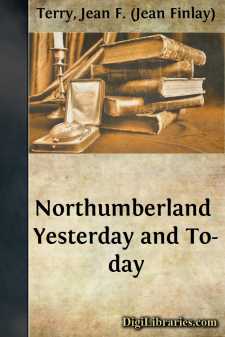Categories
- Antiques & Collectibles 13
- Architecture 36
- Art 48
- Bibles 22
- Biography & Autobiography 813
- Body, Mind & Spirit 142
- Business & Economics 28
- Children's Books 17
- Children's Fiction 14
- Computers 4
- Cooking 94
- Crafts & Hobbies 4
- Drama 346
- Education 46
- Family & Relationships 57
- Fiction 11829
- Games 19
- Gardening 17
- Health & Fitness 34
- History 1377
- House & Home 1
- Humor 147
- Juvenile Fiction 1873
- Juvenile Nonfiction 202
- Language Arts & Disciplines 88
- Law 16
- Literary Collections 686
- Literary Criticism 179
- Mathematics 13
- Medical 41
- Music 40
- Nature 179
- Non-Classifiable 1768
- Performing Arts 7
- Periodicals 1453
- Philosophy 64
- Photography 2
- Poetry 896
- Political Science 203
- Psychology 42
- Reference 154
- Religion 513
- Science 126
- Self-Help 84
- Social Science 81
- Sports & Recreation 34
- Study Aids 3
- Technology & Engineering 59
- Transportation 23
- Travel 463
- True Crime 29
Northumberland Yesterday and To-day
Description:
Excerpt
CHAPTER I.
THE COAST OF NORTHUMBERLAND."We'll see nae mair the sea banks fair,
And the sweet grey gleaming sky,
And the lordly strand of Northumberland,
And the goodly towers thereby."
—A.C. Swinburne.
Wild and bleak it may be, hard and cruel at times it undoubtedly is, but, nevertheless, this north-east coast of ours is at all times inspiring, whether half-hidden by storm-clouds, its cliffs and hollows lashed by the "wild north-easter," or seen calmly brooding in the warm haze of a summer's day, its grey-blue water smiling beneath the grey-blue sky, and its stretches of sand and bents edging the sea with a border of gold and silver.
In keeping with either mood of nature, the ancient Priory of Tynemouth, standing on the sandstone cliffs on the northern bank of the Tyne, rearing its grey and roofless walls above the harbour mouth, strikes a note that is symbolic of the Northumbria of old and the Northumberland of to-day—the note, that is, of the intimate commingling of the romance of the warlike past and the romance of the industrial present. Here, above the mouth of the river on which so many of the most noteworthy advances in industrial science have been made, and out of which sail the vessels which are often the last word of the moment in marine engineering and construction, stand calmly looking down upon them all the fragments of a building which was a century old when John signed Magna Charta, and which stands upon the site of another that had already braved the storms of nearly five hundred years.
Looking upon the Priory of St. Mary and St. Oswin we are carried back to the days when Edwin, the first king of Northumbria to embrace Christianity, built a little church here, in which his daughter took the veil. King Oswald had the first wooden structure replaced by a stone one; and here, in 651, the body of another good king—Oswyn—was brought for burial from Gilling, near Richmond in Yorkshire, where, disbanding his army, he sacrificed his cause and his life to Oswy of Bernicia, with whom he had been about to fight.
When the pirate ships of the Danes swept down upon our coasts, the Priory of St. Oswin, conspicuous on its bold headland, could not hope to escape their ravages. It was destroyed by the fierce invaders; but King Ecgfrith of Northumbria restored the shattered shrine. Again, in the year 865, it was sacked and burnt, and the poor nuns of St. Hilda, who had already fled from Hartlepool to Tynemouth hoping to find safety, were ruthlessly slain and earned the crown of martyrdom. It was again restored; but, five years later, the destroying hands of the invaders fell on the place once more, and for two hundred years the Priory stood roofless and tenantless. After the Norman Conquest, Waltheof, Earl of Northumberland bestowed it upon the monks of Jarrow. The rediscovery of the tomb of St. Oswyn in 1065, had gladdened the hearts of the monks, and forthwith the monastery was reared anew over the ashes of its former self.
[ Pronounced "Edge-frith."]
Mowbray, the next Earl of Northumberland, re-endowed the building....


